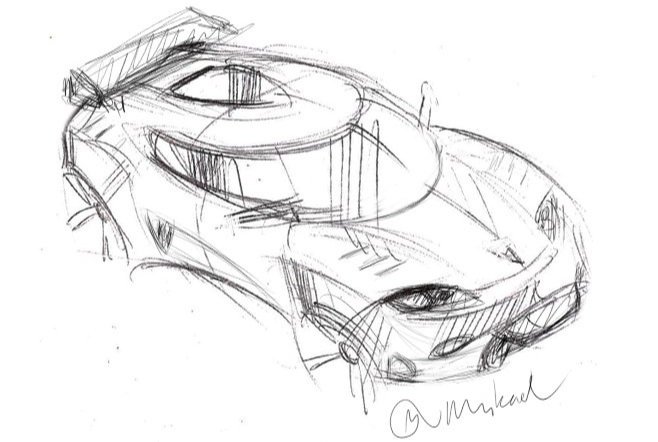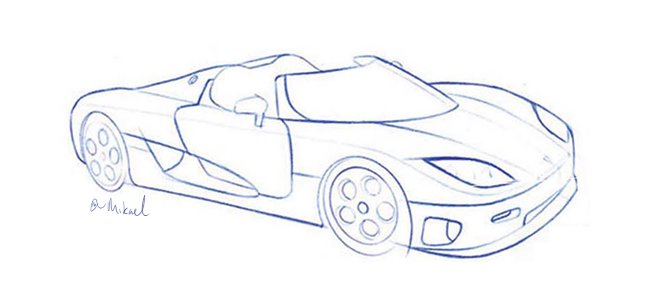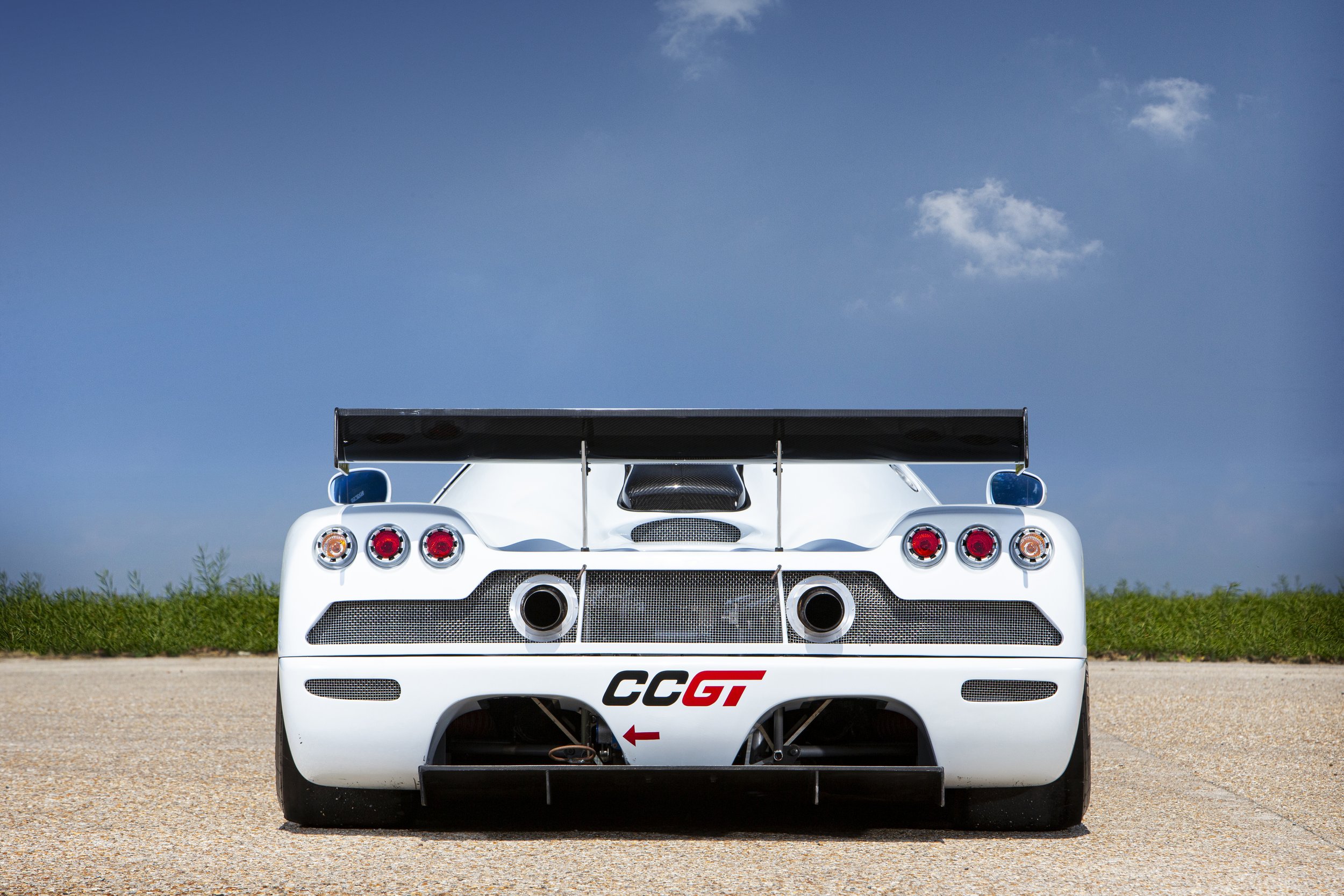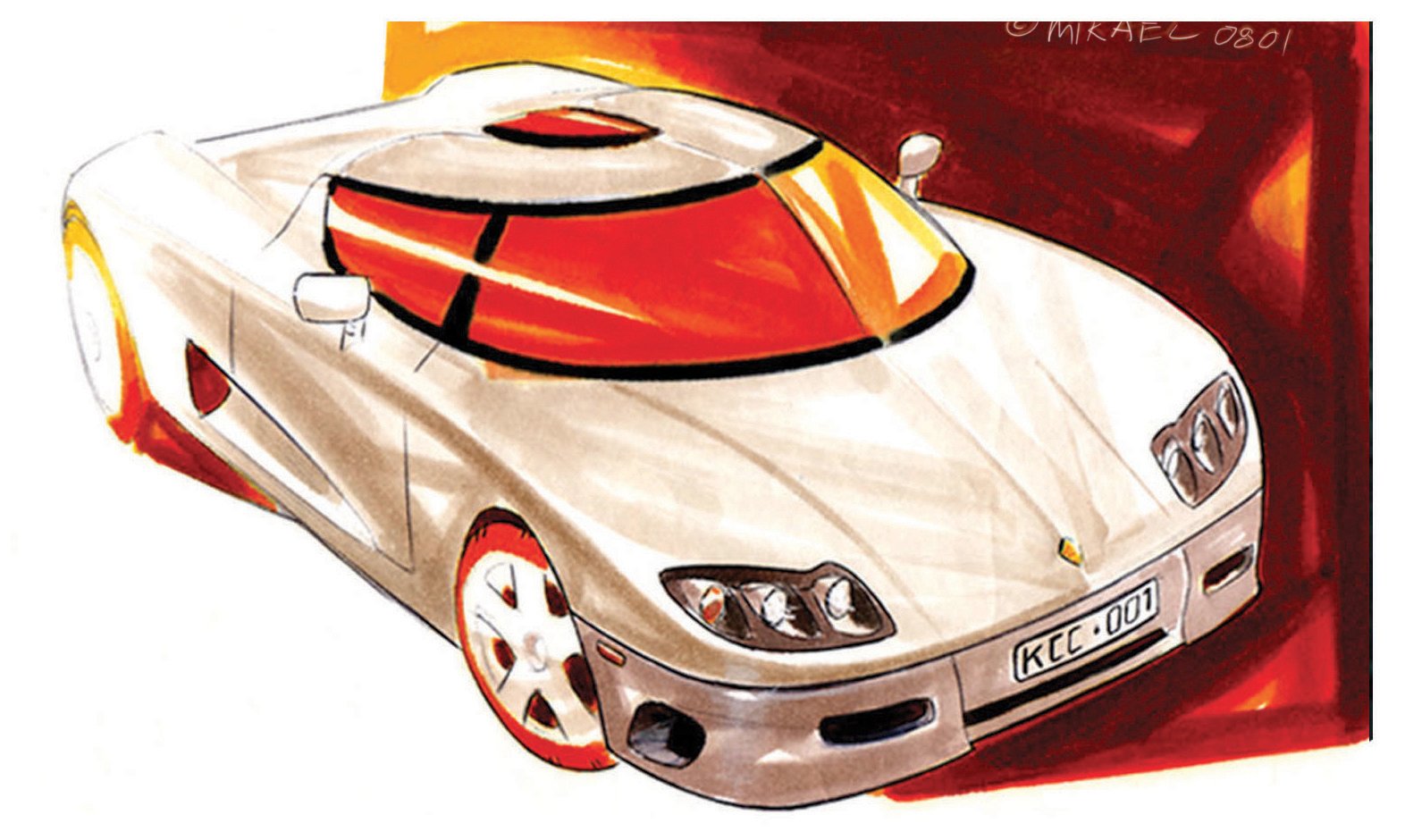Designing Koenigseggs and the Story of the CCGT: An Interview with Mikael Lindberg
On July 14th, the beloved Koenigsegg CCGT will go up for auction at Bonhams during the 2023 Goodwood Festival of Speed. The CCGT, which debuted at the 2007 Geneva International Motor Show, was developed to compete in endurance racing, specifically the 24 Hours of Le Mans.
Based upon the Koenigsegg CCR, which took the world record for fastest production car from the McLaren F1, the CCGT had a lot going for it. However, its fate was sealed when the FIA changed its regulations, increasing production requirements and banning carbon monocoques, effectively ending Koenigsegg’s Le Mans ambitions in their tracks.
The car spent the next decade and a half in the possession of Bård Eker, a Norwegian businessman involved in the early years of Koenigsegg, during which it only rarely saw daylight. Until now.
Koenigsegg CCGT. Image courtesy of Bonhams.
With the auction looming ever closer, we were eager to hear the story of the CCGT from someone close to the project. Thus, we sat down with Mikael Lindberg, a former Koenigsegg employee who had partial input into the preliminary CCGT design, to discuss the iconic race car that never was, as well as his career and stories working at the Swedish hypercar manufacturer.
Egg Registry (ER): Hello Mikael! To begin, we’d like to rewind about two decades. How did you first end up working for Koenigsegg?
Mikael Lindberg (ML): In the year 2000, during the summer break after my first year of university, I was working at industrial design firm Nya Perspektiv AB. A designer that I met there, Maxi Brun, came up with the idea and go ask Christian if he needed our help to design cars. The year after, in May 2001, we went to work for them at the old factory in Margretetorp. I was working intensively at Koenigsegg until my third year of university began and had to step back.
ER: What was your job title at Koenigsegg?
ML: The first two rounds I worked for Koenigsegg, I didn’t have a former job title, though I worked on both exterior and interior design alongside Christian [von Koenigsegg]. When I came back the third time in 2016, however, my job was more formally as a designer, as one part of a larger design team.
An early Koenigsegg sketch, courtesy of Mikael Lindberg
ER: Can you describe working alongside Christian von Koenigsegg?
ML: Christian is very passionate and dedicated to what he does. It is easier to jump on that train, so to speak, if you also have that inner driving force. My goal was to help him to create his cars to become the best on the planet. We had quite a journey, from ambitious newcomers in the automotive world to competing with the very best brands in a matter of years. Koenigsegg’s competitors like Bugatti, Ferrari and Lamborghini have existed for many decades in comparison. That is an extremely impressive achievement given the small team working at Koenigsegg in the early years, just ten to fifteen people. The work was so fast-paced that I would compare each day at the Koenigsegg design office to working one year for an OEM. We frequently had passionate people coming to visit, eager to be involved somehow. I like Christian’s mentality of never giving up. He would often say that if you don’t give up, you will succeed in the end, and history has proven him right.
ER: What do you admire most about Christian?
ML: The thing I admire most about Christian is that he gave me the opportunity to work alongside him. It gave me the best experience one ever could possess as a car designer. In addition to designing, I learned to build moulds, work with carbon fibre, and collaborate with a great engineering team.
Conceptual sketch courtesy of Mikael Lindberg
ER: Next, we’d like to talk about the CCGT. Were you involved with the nascent days of the project, or were you doing other work at Koenigsegg?
ML: I wasn’t involved with the birth of the project, since I was working on an early predecessor to Gemera, codenamed Sleipner. One day, Christian just gave me some instructions about the CCGT, that it should be based around the CCV8S, but extreme. We were trying to build a race car from a road car.
ER: Is there a certain aspect to the design of the CCGT of which you are particularly fond or proud?
ML: It’s difficult to pinpoint any particular detail, but I am proud of the way we managed to add an aggressive feeling to the original CCV8S / CCR design, which was very elegant and timeless.
Concept renderings for the CCGT painted in Lava Orange, courtesy of Mikael Lindberg
ER: What was your reaction to the news of the FIA changing their regulations which ultimately meant the CCGT would be unable to race?
ML: I didn’t get the news from Christian, it came from Stanley Dickens, who was responsible for marketing the project at the time. He told me the GT1 class was canceled… it was not a fun call.
ER: If you could say something to the person fortunate enough to be able to buy the CCGT at Bonhams, what would you tell them?
ML: Congratulations, you are buying a unique piece of history!
Koenigsegg CCGT. Image courtesy of Bonhams.
ER: Next, a more general question about your time at Koenigsegg! Which Koenigsegg projects did you have a hand in designing? Which Koenigsegg designs do you like the most and why?
ML: I was involved to varying extents in the design of the CCV8S, CCGT, Agera R, Regera, Jesko, and Gemera. I am partial to the CCV8S design, because I think that the design has aged quite well (it’s been well over 20 years!) and, of course, it’s the original. I also really admire the CC850. Though I didn’t work on it, seeing a spiritual successor being created of an early design I had a hand in creating is the greatest honour for me!
CCV8S concept art courtesy of Mikael Lindberg
ER: What is your favourite Koenigsegg?
ML: My favourite Koenigsegg is a Crystal White Regera with black carbon stripes, chassis #7188.
ER: Thank you so much for taking the time to answer our questions, Mikael!
Mikael Lindberg lives in Sweden and works as a professional designer and artist. In addition to designing cars, he designs trucks, boats, and other machinery. You can find him on Instagram @swedemikael. Answers in this interview were edited for length and clarity. Lindberg is not currently employed by Koenigsegg Automotive AB and the answers in this interview are in no way affiliated with the company.





